Shower in the bath: how to organize and features
A bath is an excellent means of recovery and a pleasant place to relax, however, no one has canceled its direct purpose, so you can’t do without a shower in the bath room. If you used to have a shower in the stove bath, today there are many other, more comfortable and progressive ways to organize it. Let's look at these methods in more detail.
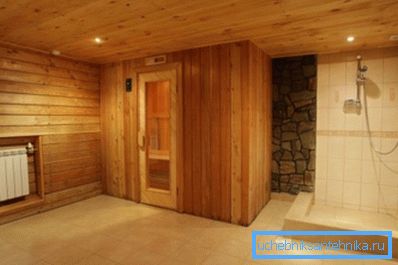
Bath showers
Special features

So, we will talk about how to organize a shower in the bath.
Let's look at how this shower room differs from a standard bathroom:
- As a rule, the bath is located in a separate room, standing at a distance from the house. Therefore, the hot water system must be autonomous;
- Most often, the bath is located on a country site or cottage, and there are no centralized water supply and discharge systems nearby. This requires the provision of autonomous supply and sewage;
- Not always there is a trunk natural gas., therefore, it is necessary to have alternative options for water heating;
- It is undesirable to have a bathroom with equipment for water heating and sanitary appliances in the common room. Continuous overheating with temperature drops will adversely affect the condition of the equipment, in addition, the metal parts will be very hot, and it will be inconvenient and even dangerous to use them.
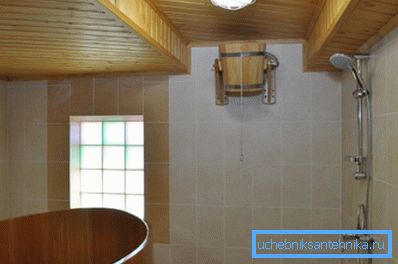
Note! First of all, it is desirable to deal with the method of supplying water for the needs of the bathroom, and only then it is possible to solve the problems of its heating and disposal.
There are only a few options to solve the problem of water supply:
| Source type | Special features |
| Open water | Water contains a very high amount of suspended particles, organic residues, microorganisms, there is a risk of infection. Requires careful filtering, poorly suited for domestic needs |
| Wells | Water quality is satisfactory, even for drinking. Submersible or surface pump required for delivery |
| Wells | They are distinguished by the highest quality of water, they require equipment with a deep-well pump. High performance, considered the most expensive, but also the most acceptable option. |
Note! It is extremely undesirable to use water from open reservoirs due to its low quality and danger of contamination. In addition, it requires serious filtering for use with plumbing and heating equipment.
Heating methods
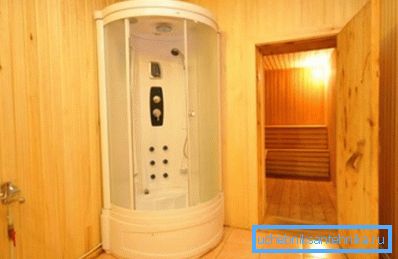
If the issue of supplying the bath with water is resolved, then it's time to talk about how to heat it. Contrasting procedures with a cold shower is great, but there is not always a need for them, but you need to wash after the steam room anyway. For these purposes you will need a warmer fluid.
From the point of view of practice, of all the heating systems available today for our purposes only three are relevant:
- Shower in the bath from the heat exchanger built into the oven. Accumulative water tank communicates with the heat exchanger, which is heated from the furnace. Due to the natural gravitational circulation, the water in the tank is heated, and from it flows by gravity into the shower head;
- Geyser. It makes no sense to install a full-fledged gas boiler for our purposes, since its performance and, consequently, the price are too high. But the usual geyser fits perfectly;
- Electric boiler or flow heater. More expensive, but also more convenient option. Preference should be given cumulative units, as the flow ones create too high a load on the power supply circuits.
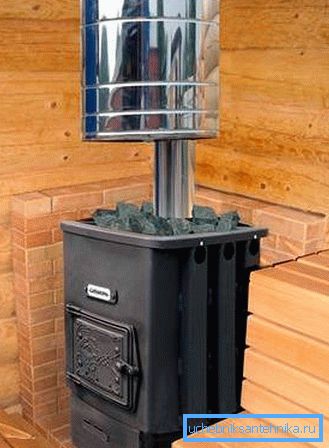
In the most traditional version of the water tank is placed in the attic or at the highest point of the room. This tank is filled from a cold water system and communicates with a heat exchanger built into the furnace. This may be a coil, water jacket or wood boiler.
If it is possible to connect to the gas mains, then it is better to install a simple water heating column or a boiler for hot water in the bath. Gas is the cheapest and reasonably convenient type of fuel that is not needed to be independently purchased and delivered to the site.
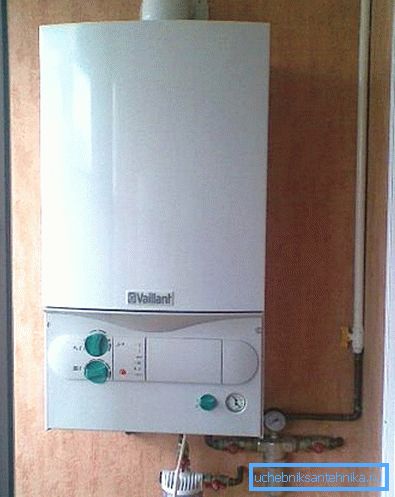
Electric heating is also an acceptable way to provide hot water. However, some explanation should be given here.
There are two types of water heaters that operate on electricity: flow and storage. Flow-through boilers are characterized by high peak power, especially if water consumption is active, so they may require a 380 V network, which is not always possible. In addition, you will need a large cross-section wiring with good insulation.
Flowing systems are considered potentially dangerous, since in the case of closures there is a possibility of a person being struck by electric current.
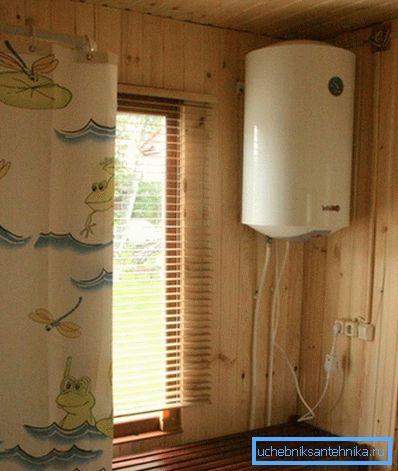
When using a boiler, there is enough power in the range of 1 to 2 kW, but there is no danger to humans. The only negative is impressive dimensions, but you can always find a convenient place for the location of the storage tank. Also worth noting is the higher cost of equipment.
For seasonal use, a tank installed on the roof will be suitable for heating from the sun, and in cloudy weather or at night, from a tubular electric heater (TEN). This is the most simplified version, which, however, is used quite often.
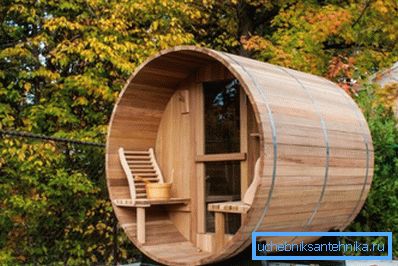
Note! If the bath is attached to the house, then it can be connected to common hot and cold water systems.
Sewage

With the supply and heated water, we figured out, now let's talk about its abstraction. There is no central sewage system outside the city, therefore it is necessary to provide an autonomous system.
The easiest way to install a shower cabin in the form of a box, then constructing a drain system will not be necessary. The sewer pipe is brought underground into the street and sent to a septic tank, where it is filtered and goes to the ground. In the case of intensive use of the shower, you may need a sewer with a cumulative capacity that requires periodic disposal.
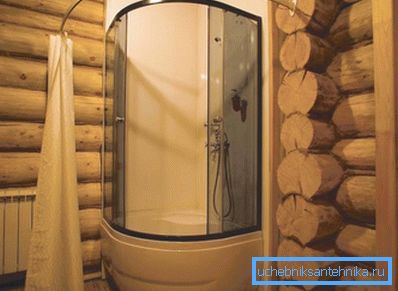
If plastic or glass shower boxes do not suit you, then you can make a shower corner with a tray or floor drain. A simpler option would be to install a pallet of acrylic, ceramic, stone or metal, the drain of which will just be connected with corrugation to the sewer pipe.
But if you want real convenience, then it is better to arrange the floor drain. To do this, a drain ladder is installed under the floor surface, connected to the sewage system, and the floor is concreted in compliance with the slopes in the direction of the drain. The surface is carefully waterproofed and trimmed with floor tiles for bathrooms.
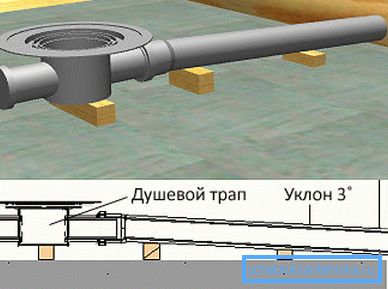
Note! The construction of a floor shower is the most difficult and important matter, since it requires high quality installation and waterproofing works.
Conclusion
When designing a steam room, it is better to immediately consider how you will do a shower in the bath with your own hands. The main tasks are to supply the bathroom with hot water and its abstraction. The video in this article reveals the topic more clearly.